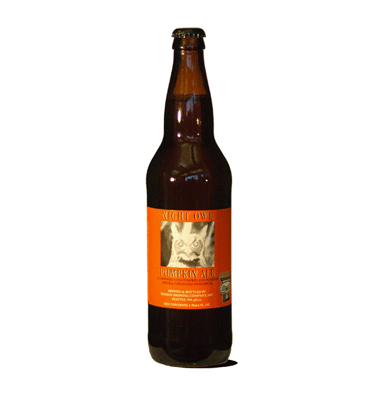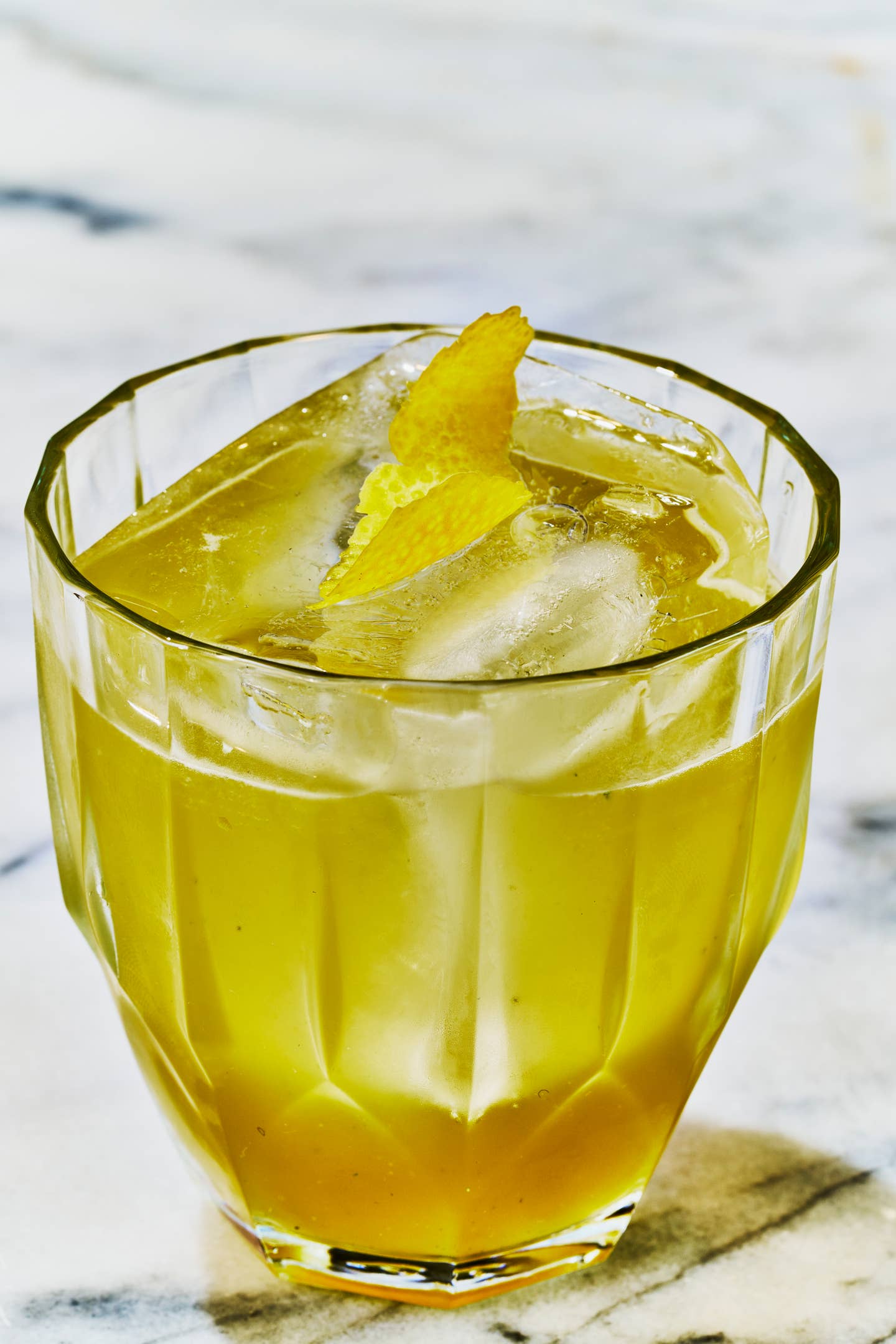
Brewing Autumnal Magic in Pumpkin Beers
Only the most inventive brew masters of yore could have conceived of mixing pumpkins and beer. Luckily for us, the brews they came up with also happen to suit the modern cravings of cold-weather tipplers, too. Legend has it that Thomas Jefferson and George Washington were brewing pumpkin ales before the American colonies became states. A flip—a cocktail fortified with beer, liquor, and a combination of cream, eggs, and sugar—sometimes infused dried pumpkin into the mix as well. Less a novelty in colonial times than a frugal substitution for English-exported barley and hops, pumpkin is considered an "adjunct" in brewing, that is, a fermentable ingredient intended to make, mask, or enhance specific flavors. Adjuncts are typically used in lieu of malted barley and, in the case of pumpkin beer, to replace a portion of hops and malt, rendering the final drink milder than traditional ale.
True pumpkin beers integrate macerated or diced pumpkin into the mash process, when the grain or adjunct is mixed with water at controlled temperatures and times. That leads to enzyme catalyzation, which transforms the starches into fermentable sugar. The aroma and finish of a good pumpkin beer contains subtle but pronounced spice notes, attributable to the addition of spices like nutmeg, cinnamon, and cloves during the boil, or final conditioning. Just as pumpkins can be used to create sweet and creamy pies or savory, hearty soups, they can also be coaxed to express nuance in a beer's finish, body, and color, depending on the type and the amount of pumpkin incorporated. Part of the Curcurbita family, pumpkins of every persuasion, including sugar, hubbard, butternut, and cushaw, are being brewed into beers across the country.
As a recognizable style, pumpkin ale disappeared from the American consciousness until the mid-1980s and '90s, amid a craft brewery renaissance. It was during this wave when beers made with complex and unusual brewing methods began to emerge, among them those using fruits and vegetables. At the same time, the food world began to pulse with a reawakened appreciation for local and seasonal cuisine, and brewers revived the subtly flavored and spiced beers of past eras. The result was an explosion of concoctions, from blueberry ales to coffee porters. Microbrews experienced a full coming-of-age at the turn of the 21st century. "I think that was the point when microbreweries weren't a gimmick anymore. We were just interested in making good beers," says Will Meyers, brew master of Cambridge Brewing Company.
The first modern pumpkin beer is generally credited to Buffalo Bill's Brewery in Hayward, California, when Bill Owens was compelled to re-create a recipe for George Washington's gourd-inspired brew. The rediscovery soon went bicoastal when Phil Bannatyne, founder of Cambridge Brewing Company, carried the (pumpkin) seed from the West Coast to Massachusetts and created his Great Pumpkin Ale. Today, scores of craft pumpkin brews, ranging from spicy and pielike to savory and squash driven, are popping up at beer bars, Whole Foods markets, and even festivals dedicated to the drink.
Reflecting America's increased awareness of seasonal cuisine, pumpkin beers are natural companions for cold-weather fare. Because of their spices and low hops content, Joe Bisacca, part owner of Elysian Brewing Company in Seattle, Washington, suggests pairing them with soups, stews, and braised meats: "I would especially recommend [them] with comfort foods like lamb osso buco with fennel and polenta." Will Meyers says that the beer goes the best with pumpkin, pumpkin, and more pumpkin: "We pair it with a pumpkin risotto, pumpkin-encrusted scallops, and pumpkin curry." Always eager to declare its passion for the art of brewing, Cambridge will showcase four of its pumpkin beers at its pumpkin beer festival this fall, including a pumpkin barley wine and the playful Biere de Gourd, modeled after cezannes, which are traditionally dry Belgian farmhouse beers, according to Meyers.
After sampling many a pint of pumpkin ale, we have chosen our favorites just in time for fall feasts and cool autumn weather. Grab your mug and head out to the front porch.
Great Pumpkin Ale Cambridge Brewing Company was the first New England brewery to restore pumpkin ale to its rightful place among American beers. Since the autumn of 1990, the Massachusetts brewery has been testing and honing the brew using a retrofitted cheese grater to shred the meat of each pumpkin. "We used to cut the pumpkins by hand, but that got to be a little tedious when production increased," Meyers says. This year, the beer is made with organic sugar pumpkins from a local educational farm, using 150 pounds in each batch, which is brewed in 25 stages over three months. The resulting amber-colored ale has an aroma of cider, a light body, and a subtle, balanced flavor. Though it's not as heavily spiced as others, its taste lingers with traces of toast and smoke. It is available only on draft in the Greater Boston area and at Cambridge in 16-ounce pints for $5 and 64-ounce growlers for $12, plus a $2 bottle deposit.
Night Owl Pumpkin Ale Representing the West Coast, the Elysian Brewing Company of Seattle began creating pumpkin beers not only as a tongue-in-cheek alternative to autumn's standard offerings but also in amicable rivalry with its longtime friends at the East Coast's Cambridge Brewing Company. What began as a joke is now the full-fledged annual Pumpkin Beer Festival, featuring seven of Elysian's limited-release styles. Elysian—whose name references the mythical underworld where the gods would take warriors to battle and toast with beer afterward—has dabbled (appropriately) in the dark side of pumpkin beer, brewing a stout and a strong ale alongside the traditional Night Owl. Night Owl is more widely available and pours with a creamy head and a medium body that coats the mouth with tangy spice and a residual ginger zestiness. Brewed with a hefty dose of squash, seeds, and freshly ground spices, this beer is greats for late-fall quaffing, with pronounced carbonation and a fragrance of cinnamon. Always up for something new, Bisacca said, "For the festival we find the biggest pumpkin we can, hollow it out, toss in the beer for a second fermentation, and then tap the pumpkin to serve it." That's a great pumpkin, Charlie Brown. The Night Owl is available in 22-ounce bottles ranging in price from $4.99 to $5.99.
Schlafly Pumpkin Ale Newer to the pumpkin ale scene, Schlafly Brewery of the St. Louis Brewing Company set out to create a distinct brew that could play ball against some of autumn's heavier seasonals. The microbrewery uses a combination of hubbard and butternut squashes to round out the beer's overall sugar and body. At 8 percent alcohol, Schlafly's ale is rich and bold, bursting with notes of clove and nutmeg, and it pairs well with substantial meat dishes and chocolate desserts. With a deep golden-orange hue, this beer is smooth and throat warming—an ideal pint for crisp autumn evenings. It is available in 12-ounce-bottle six-packs for $8.99.
Keep Reading
Continue to Next Story










